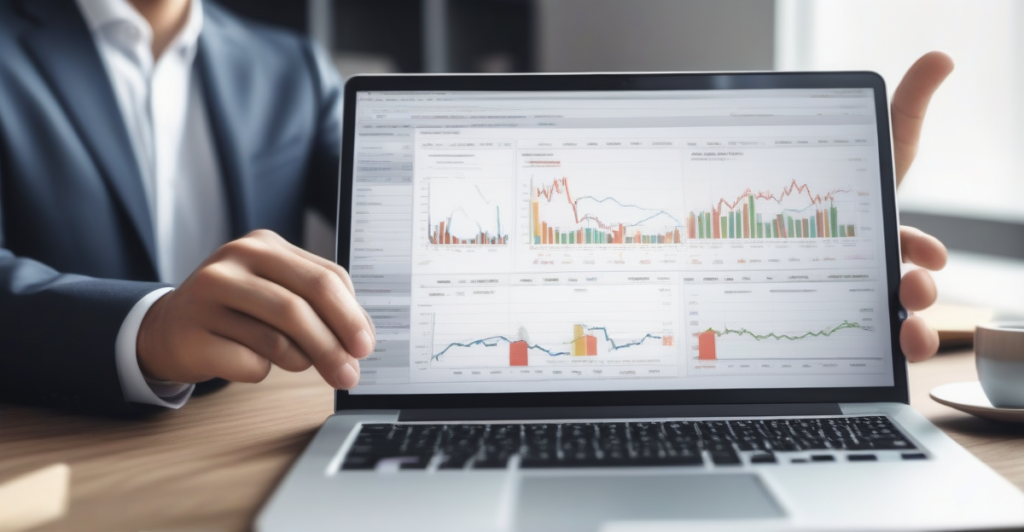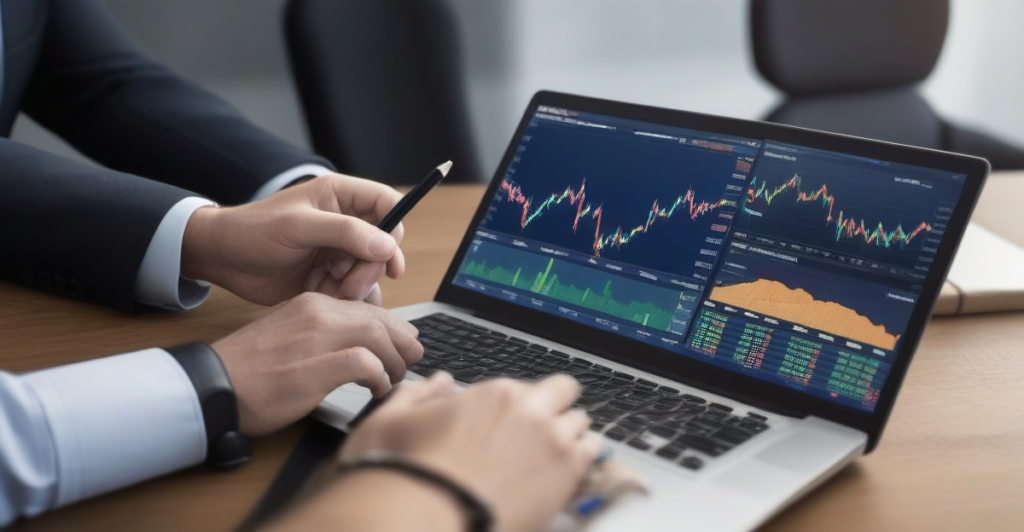Delving into the world of investment can be a daunting task, especially when considering the wide array of options available. However, one avenue worth exploring is synthetic asset trading platforms. These platforms offer unique opportunities for investors to profit from a diverse range of assets, including stocks, commodities, and currencies, without actually owning the underlying asset. In this blog post, we will examine the concept of synthetic assets, discuss the potential benefits and risks of trading on these platforms, and explore whether they are worth considering for profitable investments.
Understanding Synthetic Assets
A synthetic asset is a type of financial instrument that derives its value from an underlying asset or a collection of assets. These assets can be anything from stocks, commodities, or currencies, and are created using a combination of different financial derivatives. Synthetic assets are designed to mimic the price movements of the underlying assets without actually owning them. This allows traders to gain exposure to the price movements of the asset without having to physically purchase it.
Definition and Types of Synthetic Assets
There are several types of synthetic assets, including synthetic stocks, commodities, and currencies. Synthetic assets can also be created to replicate the performance of a specific index, such as the S&P 500. These assets are typically created using financial derivatives such as futures, options, and swaps. Traders can use synthetic assets to speculate on the price movements of the underlying asset, hedge their existing positions, or gain exposure to assets that may be otherwise inaccessible. It’s important to understand the different types of synthetic assets and their risk profiles before considering them for investment.
- Stocks
- Commodities
- Currencies
- Indices
- Derivatives
Though synthetic assets offer a unique way to diversify an investment portfolio and access assets that may be otherwise unattainable, they come with their own set of risks and complexities. It’s crucial for investors to thoroughly research and understand the characteristics of synthetic assets before getting involved with trading them.
The Role of Blockchain and Smart Contracts
One of the key components that enable the creation and trading of synthetic assets is the implementation of blockchain technology and smart contracts. Blockchain allows for the transparent and immutable recording of transactions, while smart contracts are self-executing contracts with the terms of the agreement directly written into lines of code. Together, these technologies facilitate the creation, issuance, and trading of synthetic assets in a decentralized and trustless manner.
A substantial benefit of utilizing blockchain and smart contracts for synthetic asset trading platforms is the increased accessibility and efficiency in transacting these assets. Moreover, the use of blockchain and smart contracts provides greater transparency and security, which is paramount when dealing with complex financial instruments like synthetic assets.
The Prospects of Investing in Synthetic Assets
Some investors are looking into synthetic assets as a potential avenue for profitable investments. With the rise of decentralized finance (DeFi) and the increasing variety of assets available for synthetic trading, the prospects of investing in synthetic assets are worth exploring.
Profit Potential in Synthetic Asset Trading
On the surface, synthetic asset trading platforms offer investors the opportunity to gain exposure to a wide range of assets, including traditional stocks, commodities, and cryptocurrencies, without needing to own the underlying assets. This opens up the potential for diversification and the ability to profit from price movements in various markets.
Furthermore, the use of leverage on synthetic asset trading platforms can amplify potential profits, allowing investors to trade larger positions with a smaller amount of capital. This leverage can increase profit potential, but it also comes with heightened risk.
Risk Factors to Consider
Potential risk factors to consider when investing in synthetic assets include the volatility of the underlying assets, counterparty risk, and the potential for liquidation if positions move against the investor. Additionally, the relatively new and evolving nature of synthetic asset trading platforms may introduce uncertainties and regulatory risks.
- Volatility of underlying assets
- Counterparty risk
- Liquidation risk
Any investment in synthetic assets should be approached with a thorough understanding of the associated risks and a clear risk management strategy in place.
Comparing Platforms
Not all synthetic asset trading platforms are created equal. It is important to compare the features, user experience, and security measures of different platforms to make an informed investment decision. Below is a comparison table of some key platforms in the market:
| Platform | Key Features |
| Platform A | Leverage trading, diverse asset offerings, low fees |
| Platform B | High liquidity, advanced trading tools, responsive customer support |
| Platform C | Cross-chain trading, decentralized governance, robust security protocols |
Key Features of Leading Synthetic Asset Trading Platforms
When comparing synthetic asset trading platforms, it’s crucial to consider the key features that set them apart. Some of the key features of leading platforms include:
- Advanced trading options such as leverage trading and derivatives
- Diverse asset offerings including cryptocurrencies, commodities, and stocks
- Robust liquidity and high trading volumes
- Responsive customer support and educational resources for users
- Stringent security measures such as encryption and secure wallet storage
This comprehensive evaluation can help investors identify the platform that aligns best with their investment goals and risk tolerance.
User Experience and Security Measures
Leading synthetic asset trading platforms prioritize user experience and security measures to ensure a seamless and safe trading environment. They offer intuitive interfaces, responsive customer support, and robust security protocols to protect users’ assets and information.
It is crucial for investors to feel confident in their chosen platform, knowing that their assets are secure and their user experience is smooth and hassle-free. This, in turn, fosters trust and encourages active participation in the synthetic asset market.
Strategies for Investors
For investors eager to explore the potential of synthetic asset trading platforms, there are several strategies that can be utilized to maximize profits and minimize risks. Whether you are building a diversified portfolio with synthetic assets or implementing timing and market analysis techniques, it is important to approach these strategies with careful consideration and a solid understanding of the market.
Building a Diversified Portfolio with Synthetic Assets
To build a diversified portfolio with synthetic assets, investors should consider incorporating a variety of asset classes, such as stocks, commodities, and cryptocurrencies. Diversification can help spread risk and reduce the impact of market volatility on the overall portfolio. Additionally, investors should research and analyze the different synthetic assets available on trading platforms to ensure they are selecting assets that align with their investment goals and risk tolerance.
Furthermore, it is crucial to regularly review and rebalance the portfolio to maintain diversification and adapt to market changes. This can involve adding new synthetic assets, adjusting weightings, or removing underperforming assets. By maintaining a diversified portfolio, investors can position themselves to take advantage of various market conditions and potentially increase long-term returns.
Timing and Market Analysis Techniques
Any investor looking to succeed in synthetic asset trading should pay close attention to timing and market analysis techniques. Timing plays a crucial role in maximizing profits and minimizing losses. By utilizing technical analysis tools, such as chart patterns, indicators, and volume analysis, investors can identify potential entry and exit points for their trades. Additionally, staying informed about economic indicators, geopolitical events, and market sentiment can provide valuable insights for making informed investment decisions.
With the use of appropriate market analysis techniques, investors can gain a competitive edge and enhance their ability to anticipate market movements. This can involve utilizing both fundamental and technical analysis to assess the intrinsic value of synthetic assets and identify potential trading opportunities. By leveraging these techniques, investors can make well-informed decisions and optimize their investment strategies.
Future Trends in Synthetic Asset Trading
After diving deep into the world of synthetic asset trading, it’s essential to consider the future trends that are likely to shape this rapidly evolving landscape. From innovations and regulatory developments to potential market growth and investment opportunities, several factors are set to impact this market over the coming years.
Innovations and Regulatory Developments
The synthetic asset trading space is poised for significant innovations, including the integration of cutting-edge technologies such as blockchain and decentralized finance (DeFi). These innovations have the potential to revolutionize the way synthetic assets are created, traded, and managed, offering new opportunities for investors and traders alike. Simultaneously, regulatory developments surrounding synthetic asset trading are also gaining momentum, with global regulators closely monitoring and shaping the legal framework for these platforms. The industry is likely to witness a push for increased transparency, compliance, and investor protection, which could pave the way for a more secure and reliable trading environment.
Potential Market Growth and Investment Opportunities
Investment in synthetic assets trading platforms is expected to surge as the market continues to expand rapidly. With the rise of digital assets and the growing demand for diverse investment opportunities, synthetic asset trading platforms offer a novel way for investors to gain exposure to a wide range of assets. The potential for market growth in this space is substantial, especially as retail and institutional investors seek efficient, cost-effective, and diversified investment options. This presents a compelling opportunity for investment in synthetic asset trading platforms, with the potential for significant returns in the long run.
Growth in the synthetic asset trading sector is projected to outpace traditional financial markets, driven by technological advancements, a shifting regulatory landscape, and increasing investor interest. As blockchain and DeFi technologies continue to mature, the potential for innovation in synthetic asset trading is vast, making it a promising area for profitable investments and portfolio diversification.

Final Words
Drawing together the various insights and considerations, it is clear that synthetic asset trading platforms are indeed worth exploring for potentially profitable investments. With their ability to offer exposure to a diverse range of assets and markets, as well as the potential for efficient and cost-effective trading, synthetic asset trading platforms present a compelling opportunity for investors looking to expand their portfolio. However, it is crucial for investors to conduct thorough research and due diligence before engaging with these platforms, as the risks and complexities associated with synthetic assets should not be overlooked. By approaching synthetic asset trading with caution and a deep understanding of the market, investors can harness the potential benefits these platforms offer while mitigating their associated risks.



